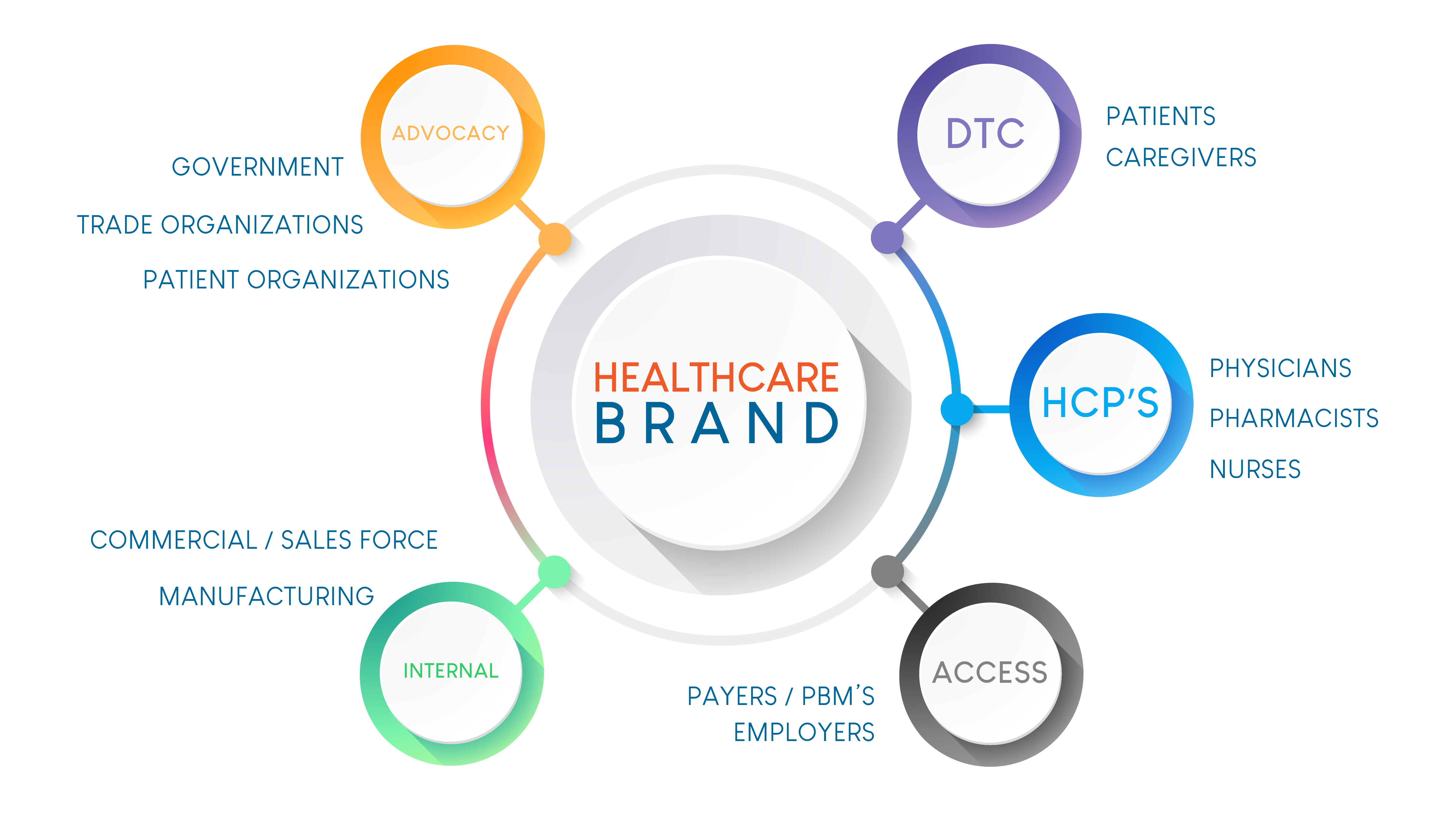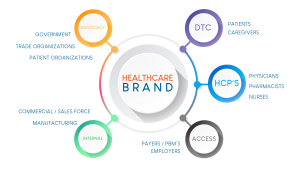
Are integrated communications as important for a healthcare brand as they are for a consumer brand product?
WHAT YOU MUST KNOW IN 2019 ABOUT INTEGRATED COMMUNICATIONS IN HEALTHCARE
Integrated communications in healthcare have never been so important. With the proliferation of healthcare services, the emerging role of tech in health (especially patient-driven innovations like health apps, wearables, etc), and the empowerment of patients through online networks, health industry brands must be able to deliver a consistent message across audiences to truly impact outcomes.
Key Players
To develop a well-integrated communications plan, you need to really know who you must communicate to (hint: it’s not only your patients) and how to communicate with them. These audiences include a wide range of players that exert different levels of influence during a patient’s journey. Knowing who these players are and how they interact within the patient’s journey is key to aligning a consistent brand message and orchestrating a masterful communications strategy.

Internal vs External Players
In healthcare, it’s especially important to take into consideration who the internal and external audiences are (and their level of knowledge) in order to craft messages accordingly.
External audiences consist of everyone who might have some type of interaction with the end-user (in many cases, patients). Beyond patients and physicians, this audience might include pharmacists, payers, trade organizations, etc. Each audience plays a role within the patient’s journey and they must receive a consistent message, independent of the communications channel. In the case of physicians, the message delivered by a sales rep must be aligned with what the patient is hearing through advertising, for example. This way, the physician can amplify the same message the patient has been receiving, meeting his or her expectations and building trust with the brand. The communications strategy for the brand must generate a dialogue between the patient and the physician at the medical office level.
On the other hand, you can’t omit your company’s internal audiences. When a product or service is launched, the first people that should know about it is your employees. Employees are your biggest asset and can turn into your biggest advocates. Effectively communicating with your internal audience is one of the secret recipes within your integrated communications plan. However, just as you must know who your external players are and how they interact, not all internal audiences are created equal. Within a global pharma company, for example, you have different types of audiences with various levels of understanding, access, and interest with whom you must effectively communicate to (hint: you’re not going to communicate with HQ the same way you communicate with line-manufacturing associates). And if the company has sites across the world, language and cultural aspects must be taken into consideration as well.
The Role of Technology
When talking about integrated communications in healthcare, the use of technology must also be forefront in the marketer’s mind. Different kinds of technology and devices accompany the patient throughout his whole journey, placing special importance in the role tech plays to drive brand messaging. Digital communications channels provide an opportunity to reach the patient (and the doctor too) where we couldn’t before. For example, text messaging programs or apps that drive medication adherence and compliance provide value to the patient and physician while building on the brand messaging.
Furthermore, we can’t speak about technology and digital communications without mentioning social media. Social networks must play a role within the integrated communications plan to further solidify the brand messaging. According to Hootsuite & We are Social’s 2019 Digital Report, 77% of US internet users engaged with social content and spent a daily average of 2:04 hours using social media. The immediacy and targeted nature of social makes it an important tool within your plan. Moreover, social media provide access to a targeted audience through ad capabilities and influencer niches that have built a community of loyal followers.
Undoubtedly, an integrated communications plan is vital to the success of a healthcare brand. Several considerations have to be taken when developing a robust communications plan to deliver a consistent message through relevant and accessible channels.
PharmaHealth Group is a Florida-based communications consultancy agency that specializes in developing integrated communications for the healthcare industry. If you would like to discuss your current communications strategy, please e-mail us to coordinate a meeting.

